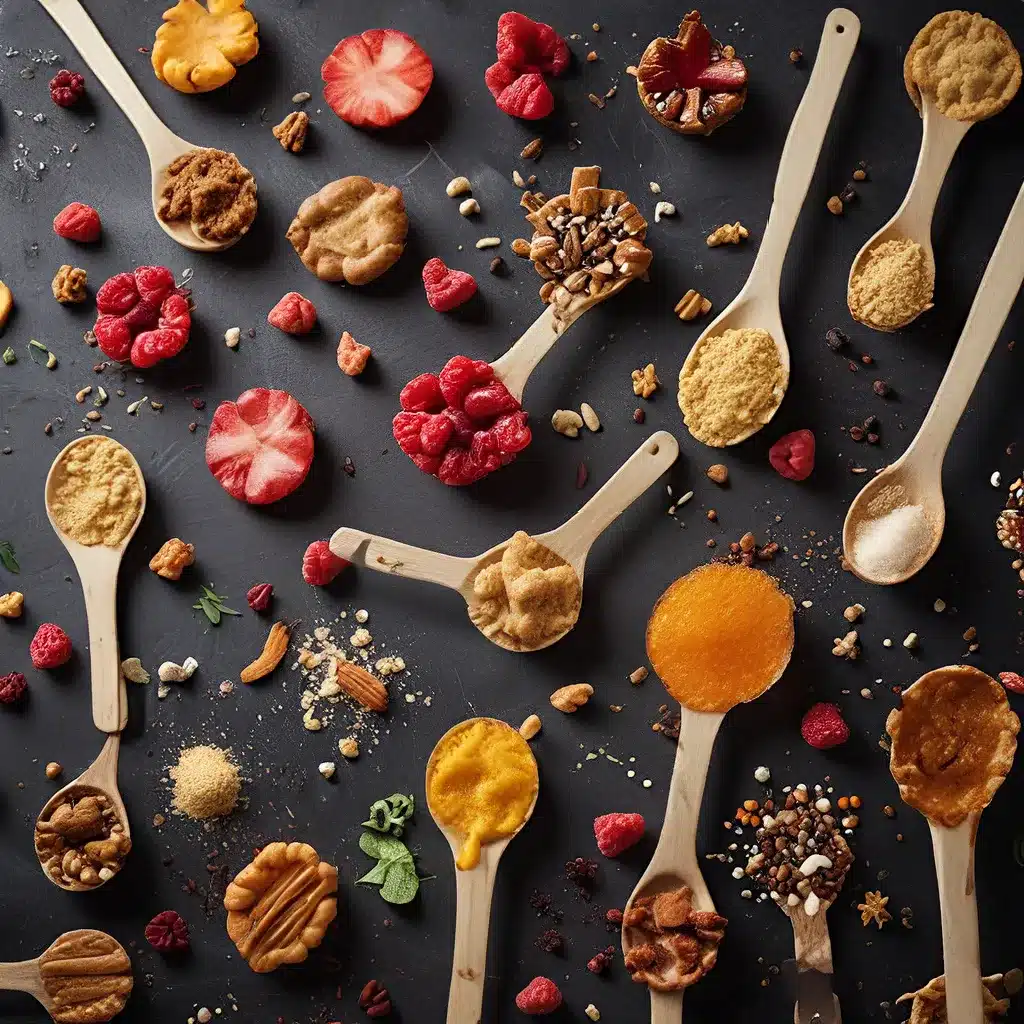
As a food scientist, I’m constantly amazed by the incredible flavors and innovative foods being brought to market. Strolling through the grocery store is like a college reunion, filled with the products created by my former classmates and labmates. From the yogurt aisle to the candy section, I can’t help but marvel at the creativity and expertise of my industry peers.
But beyond the exciting new releases, one of the best parts of my job is getting to play the role of a culinary fortune-teller – predicting the flavor trends and product patterns that will captivate consumers in the year ahead. And let me tell you, 2023 is shaping up to be a year of flavor explosion!
The Rise of Unexpected Combinations
One of the biggest trends we’re seeing is a growing appetite for unexpected flavor pairings. Consumers are becoming increasingly adventurous, seeking out taste experiences that challenge their preconceptions and push the boundaries of what’s possible.
Take the world of cocktails, for example. Traditionally, cocktails have been all about the classic flavor combinations – think gin and tonic, old fashioneds, and martinis. But nowadays, people are craving something more… unusual. That’s where products like Jordans Skinny Mixes come in. By offering unique, low-calorie flavor blends like the “Mermaid Flavor Burst,” they’re catering to the adventurous, health-conscious drinker who wants to make a statement with their beverage.
And it’s not just cocktails – this thirst for the unexpected is rippling through the entire food and beverage landscape. Cheese, once dominated by the tried-and-true classics like cheddar and mozzarella, is now seeing a surge of innovative flavor combinations. Cheese makers are experimenting with everything from fruity infusions to savory herb blends, creating products that challenge our preconceptions about what cheese should taste like.
Flavor pairing has become an art form, with experts exploring the science behind how different ingredients can complement and enhance one another. It’s all about finding those unexpected harmonies that delight the palate and keep consumers coming back for more.
The Nostalgia Factor
But it’s not all about pushing the boundaries – there’s also a strong undercurrent of nostalgia in the food world. Consumers are craving the flavors and experiences that evoke cherished memories from their childhoods or simpler times.
Take the resurgence of classic soda brands like Foxs U-Bet Syrup and Dr Browns. These timeless beverages are making a comeback, tapping into our collective longing for the comforting tastes of the past. And it’s not just soda – peanut butter, that childhood staple, is also experiencing a renaissance, with people rediscovering the joys of that creamy, nutty goodness.
Even in the world of cocktails, we’re seeing a return to the classics. While innovative flavor combinations are captivating consumers, there’s also a growing appreciation for the time-honored cocktail recipes that have stood the test of time. It’s all about striking the right balance between the new and the nostalgic.
The Science Behind the Trends
But what’s driving these flavor trends, you ask? Well, as a food scientist, I can tell you that it’s all about understanding the science behind taste.
At the heart of it all is the complex interplay between our senses – sight, smell, and touch – and how they contribute to our overall perception of flavor. By delving into the nuances of aroma, texture, and color, flavor scientists are able to create products that tap into our deepest sensory experiences.
Take the example of cheese. The way the fat and proteins in cheese interact with our taste buds is a delicate dance, with even the slightest adjustments to the manufacturing process having a profound impact on the final flavor profile. It’s a level of precision that requires a deep understanding of food chemistry and the science of sensory perception.
And when it comes to unexpected flavor pairings, it’s all about identifying the complementary and contrasting elements that create a harmonious taste experience. Flavor pairing is a field of study in itself, with researchers exploring the complex interactions between different compounds and how they can be leveraged to create something truly unique.
Of course, the science of taste is an ever-evolving field, with new discoveries and insights emerging all the time. As a food scientist, I’m constantly in awe of the advancements being made, and I can’t wait to see what the future holds.
The Future of Flavor
So, what’s next on the horizon for the world of food and flavor? Well, if the current trends are any indication, it’s going to be an exciting ride.
Personalization is one area that’s ripe for innovation. As consumers become more discerning and demanding, we’re likely to see a rise in products that are tailored to individual preferences. Imagine a world where your favorite yogurt or cereal is customized to your unique taste buds, with the perfect balance of flavors and textures that you crave.
And speaking of texture, I predict that we’ll see a greater emphasis on the mouthfeel of food and beverages. Consumers are becoming more attuned to the sensory experience, and they’re craving products that offer a satisfying, almost indulgent tactile experience.
But perhaps the most exciting development on the horizon is the potential for functional flavors. As people become more conscious of their health and wellness, we’re likely to see a surge in products that not only taste great but also offer tangible benefits, like improved gut health or enhanced cognitive function.
The world of food science is constantly evolving, and the possibilities are endless. So, whether you’re a die-hard foodie or just someone who loves to indulge in delicious treats, keep your taste buds primed for the flavor explosion that’s sure to come in 2023 and beyond.
And who knows, maybe one day you’ll be the one shaking a handful of Planters peanuts into your hand, just like my dad used to do. The journey of flavor is a never-ending adventure, and I can’t wait to see where it takes us next.

